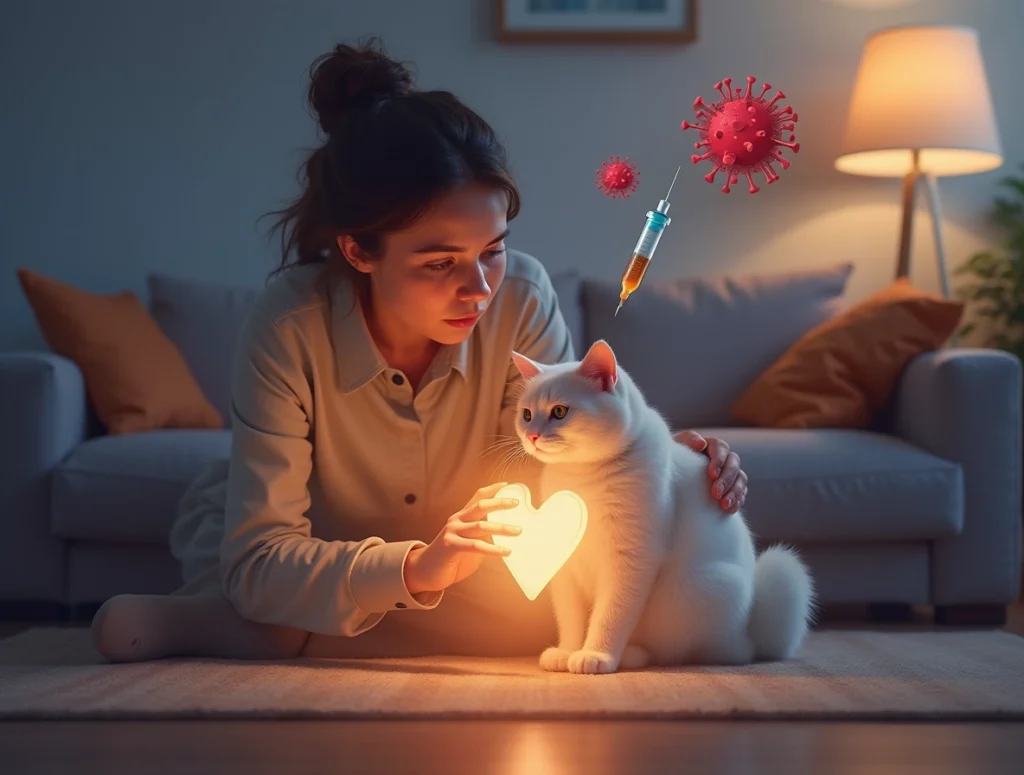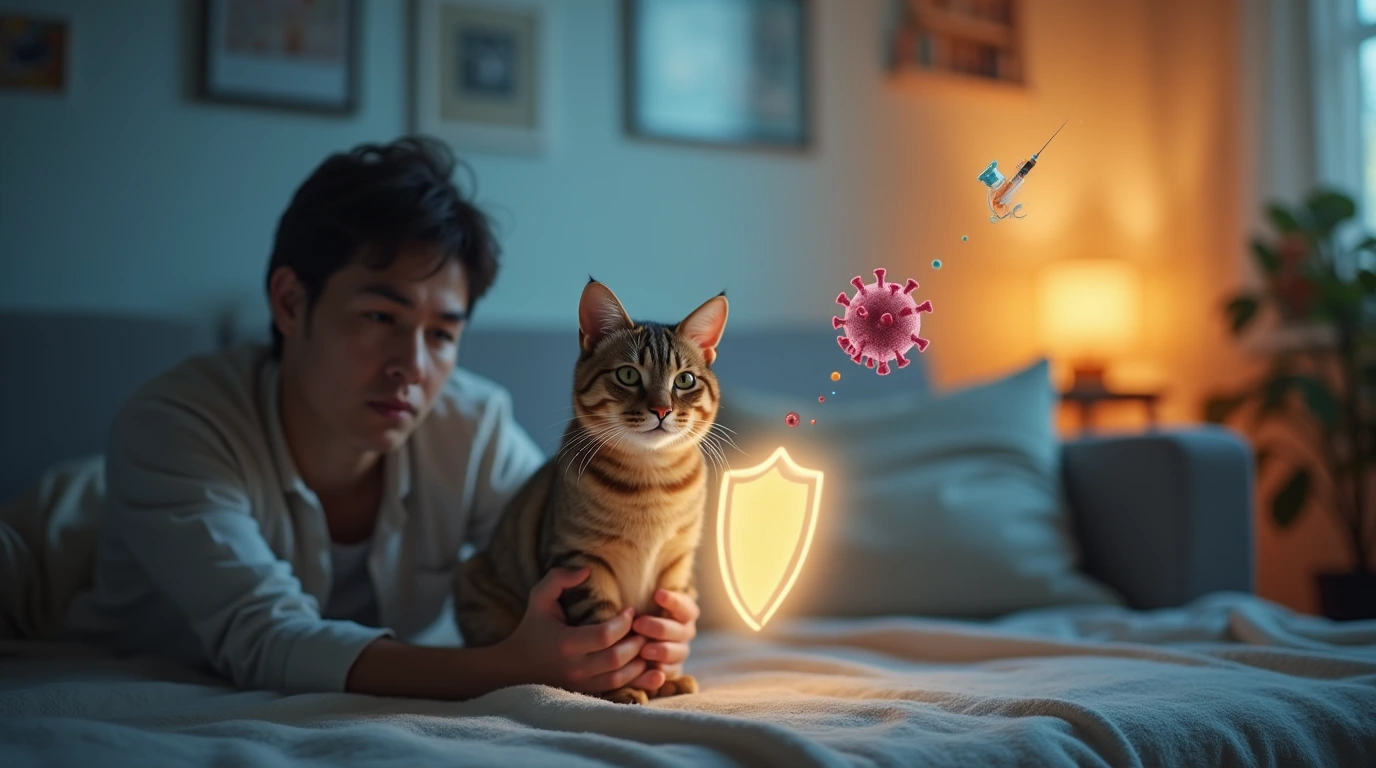The Fears of Pet Parenthood – Can Cats Get Parvo?
As a cat owner, you’re probably well aware of the constant worry that comes with caring for a beloved pet. Whether it’s a new kitten or an aging cat, you always want to ensure they are safe and healthy. One question that might be running through your mind is: Can cats get parvo? If you’ve heard of parvo in dogs, it’s natural to wonder if your cat might be at risk as well. The thought of your feline friend contracting a deadly virus can stir up a lot of concern.
In this article, we’ll walk you through everything you need to know about parvo, particularly in cats, and offer clear, evidence-based answers to some of your most pressing questions. By the end, you’ll feel equipped to protect your pet from harm and make informed decisions regarding their health.
What is Parvo? Understanding the Virus
Overview of Parvovirus
Parvovirus is a virus that can affect a variety of animal species, but it’s most commonly associated with dogs. For dogs, parvovirus attacks the gastrointestinal system and weakens their immune system, often leading to severe vomiting, diarrhea, and dehydration. In extreme cases, parvo can be fatal if not treated immediately.
The virus is highly contagious, spreading through contact with infected bodily fluids such as feces, vomit, or saliva. It’s notorious for being resilient and can survive for months in the environment, making it a serious concern for pet owners, especially in places where animals are in close contact with each other, like shelters or dog parks.
Parvo in Dogs vs. Cats
You might be wondering, If parvovirus affects dogs, could it affect cats as well? The answer is both yes and no. While cats are not susceptible to the exact strain of parvovirus that affects dogs, they are vulnerable to a similar virus called feline panleukopenia virus (FPV), also known as “cat parvo.”
Both parvovirus in dogs and panleukopenia in cats share similar characteristics. For example, both viruses can cause severe gastrointestinal issues and lead to fatal consequences if not treated swiftly. However, they are distinct viruses specific to each species and cannot be transmitted between dogs and cats.

Can Cats Get Parvo? The Answer You Need
Are Cats Susceptible to Parvo?
The short answer is no — cats do not get parvovirus in the same way dogs do. However, they are at risk for feline panleukopenia, which is often mistakenly referred to as “cat parvo” because of its similar symptoms and severity.
Feline panleukopenia is a viral disease that primarily affects a cat’s immune system and gastrointestinal tract. This virus is highly contagious and can be deadly, particularly in kittens or cats that haven’t been vaccinated.
Is There a Parvovirus Strain for Cats?
Although parvovirus is a term commonly associated with dogs, it’s important to note that cats have their own version. Feline panleukopenia (FPV) is the virus that most closely resembles canine parvovirus.
Like parvovirus in dogs, feline panleukopenia causes damage to the cat’s gastrointestinal system, bone marrow, and immune cells, leading to severe symptoms. However, FPV is a distinct virus and only affects cats.
Symptoms of Parvo in Cats: What to Watch For
Key Signs of Parvovirus in Cats
Feline panleukopenia can manifest through a variety of symptoms, which may vary in severity depending on the cat’s age and overall health. It’s essential to keep a close eye on your cat for any unusual behavior, especially if they’ve been exposed to other animals or environments that could harbor the virus.
Common symptoms of feline panleukopenia include:
- Vomiting: A common early sign that your cat is unwell.
- Diarrhea (often bloody): Severe, watery diarrhea is one of the hallmark symptoms of this virus.
- Loss of appetite: Cats may stop eating and drinking, leading to dehydration.
- Fever: Elevated body temperature is a sign of infection.
- Lethargy: A lack of energy or refusal to move or play.
- Dehydration: Often results from vomiting and diarrhea, which can worsen the condition.
Early vs. Late Symptoms
- Early Symptoms: In the beginning, your cat might just seem a bit off. They might show slight lethargy or lose interest in food. These early symptoms can be subtle and easy to overlook.
- Late Symptoms: As the disease progresses, symptoms intensify. Vomiting and diarrhea become more severe, often leading to dehydration and shock. If left untreated, feline panleukopenia can quickly become fatal.
If you notice any of these symptoms, especially if your cat is not eating or drinking, it’s crucial to seek veterinary attention immediately. The earlier you catch the infection, the higher the chances of successful treatment.
How Do Cats Contract Parvo?
Transmission and Risk Factors
Feline panleukopenia is highly contagious. The virus is primarily spread through contact with bodily fluids from an infected cat, such as vomit, feces, and saliva. The virus can also be transmitted via contaminated objects, such as food and water bowls, bedding, or toys.
Here are some of the key risk factors that can increase your cat’s chances of contracting panleukopenia:
- Exposure to Infected Cats: The most common mode of transmission is through contact with an infected animal. Shelters, rescue groups, or even multi-cat households pose a higher risk for exposure.
- Unvaccinated Cats: Cats that have not been vaccinated are highly susceptible to the virus.
- Kittens and Young Cats: Kittens are especially vulnerable due to their underdeveloped immune systems.
Common Sources of Exposure
- Public Spaces and Shelters: Cats that frequent public areas, such as shelters or rescue organizations, are at an increased risk of exposure.
- Unclean Environments: Homes or facilities where cleanliness is not maintained could harbor the virus for weeks or even months.
- Other Animals: In some cases, a cat could be exposed to the virus from another animal, including raccoons, foxes, and other wild animals, which can sometimes carry the virus without showing symptoms.
Preventing Parvo in Cats: A Vital Guide
Vaccination and Protection for Your Cat
The best way to protect your cat from feline panleukopenia is through vaccination. Fortunately, vaccines are highly effective at preventing the disease, so long as your cat receives them on time.
Here’s what you need to know about vaccinating your cat:
- Kitten Vaccination Schedule: Kittens should receive their first vaccine at 6-8 weeks of age, followed by booster shots at 12 and 16 weeks. This schedule helps ensure that your kitten’s immune system is strong enough to fight off infections.
- Adult Cats: For adult cats, an annual booster shot is generally recommended to maintain immunity.
How to Keep Your Cat Safe from Parvo
In addition to vaccination, there are other steps you can take to reduce your cat’s risk of contracting feline panleukopenia:
- Clean Your Home: Regularly disinfect your cat’s living environment, including their litter box, food and water dishes, and bedding.
- Avoid High-Risk Areas: If possible, avoid taking your cat to places where they may come into contact with other animals, such as shelters, pet stores, or public parks.
- Limit Exposure to Sick Cats: Keep your cat away from other cats that are sick or show signs of illness.
Treatment Options for Parvo in Cats
What to Do if You Suspect Parvo
If you suspect your cat may have contracted feline panleukopenia, it’s important to act fast. The virus progresses rapidly, and without prompt treatment, it can be fatal.
Veterinary Care and Supportive Treatments
While there is no specific cure for feline panleukopenia, supportive care can help your cat recover. Veterinary treatment usually involves:
- Intravenous Fluids: To rehydrate your cat and help flush out toxins.
- Medications: Anti-nausea and anti-diarrheal medications may be administered to ease symptoms.
- Antibiotics: To prevent secondary bacterial infections that may occur due to the compromised immune system.
Treatment often requires hospitalization, and your cat may need to stay at the clinic for several days. It’s crucial to follow your veterinarian’s instructions and continue monitoring your cat’s progress.
Can You Prevent Parvo in Cats?
Steps to Minimize Risk
Vaccination is the most effective way to prevent your cat from contracting feline panleukopenia, but there are other steps you can take to minimize the risk:
- Keep Your Cat Indoors: Limiting your cat’s exposure to the outside world can significantly reduce the risk of infection.
- Practice Good Hygiene: Clean your cat’s food bowls, litter boxes, and bedding regularly.
- Quarantine New Pets: If you adopt a new pet, make sure they’re healthy and vaccinated before allowing them to interact with your other cats.
Vaccination Schedule and Other Tips
- Stick to the Vaccination Schedule: Don’t skip any vaccination appointments, and make sure your cat gets regular boosters.
- Monitor Your Cat’s Health: Watch for any signs of illness and take immediate action if you notice anything unusual.
Conclusion: Keeping Your Feline Safe and Healthy
Final Thoughts on Parvo and Your Cat
In conclusion, while your cat can’t get parvovirus in the same way dogs do, they are susceptible to a similar disease, feline panleukopenia, which can be just as serious. By staying vigilant and following a proper vaccination schedule, you can protect your cat from this deadly virus. Keep their environment clean, avoid risky situations, and if symptoms of illness arise, seek immediate veterinary care. Your cat depends on you for protection, so don’t leave their health to chance.
FAQ: Do Cats Get Parvo?
Frequently Asked Questions About Parvo and Cats
- Can cats catch parvo from dogs?
- Answer: No, cats cannot catch canine parvovirus. However, they can get a similar virus known as feline panleukopenia.
- How can I protect my cat from parvo?
- Answer: Vaccinate your cat, maintain a clean living environment, and avoid exposing them to sick or unvaccinated animals.
- What is the difference between parvo in cats and dogs?
- Answer: While both viruses cause similar symptoms, feline panleukopenia affects cats, and canine parvovirus affects dogs. They are distinct viruses that do not cross species.
- Can indoor cats get parvo?
- Answer: While indoor cats are at lower risk, they can still contract the virus if exposed to contaminated items or other infected animals.
By taking the right precautions and being vigilant, you can ensure that your cat stays safe from the threat of feline panleukopenia. Remember, prevention through vaccination is key. If you’re unsure about your cat’s vaccination status, make an appointment with your vet today to discuss their health plan. Your cat’s well-being is worth the effort!

